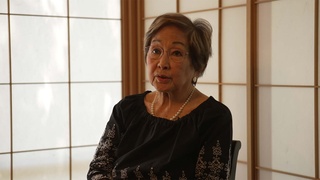Interviews
The Master of Media
Working in media, being able to tell the story through my film work and through the work of V.C. [Visual Communications], I was able to really work out some of the emotional stresses [of the camp experience]….There was a lot of self-hate because I was different, I was the enemy….So you begin to develop a very very negative self image, you didn’t want to hang out with other Japanese Americans or Asian Americans because that becomes very conspicuous, you begin to reject anything Japanese, so there’s this whole process. Those are some of the themes that I like to work with. That’s the power of film or video media. It doesn’t necessarily help you intellectually, or enlighten you intellectually, but it enlightens you emotionally.
Date: August 16, 2011
Location: California, US
Interviewer: Alexa Kim
Contributed by: Watase Media Arts Center, Japanese American National Museum
Explore More Videos

Japanese reputation in Colombia
(b.1974) Japanese Colombian who currently resides in the United States

Interracial marriage trends
(b.1974) Japanese Colombian who currently resides in the United States

Influence of Mexican culture after returning from camp
(b. 1943) Japanese American transgender attorney

Japanese American solidarity
(b. 1943) Japanese American transgender attorney

First Exposure to Animation
(b. 1934) Award-winning Disney animation artist who was incarcerated at Topaz during WWII

Japanese community in Mission
(b. 1922) Canadian Nisei who was unable to return to Canada from Japan until 1952

Learning American cooking
(b.1909) Nisei from Washington. Incarcerated at Tule Lake and Minidoka during WWII. Resettled in Chicago after WWII

Parents in Utah
(b. 1939) a businesswoman whose family volunterily moved to Salt Lake City in Utah during the war.

Not bringing shame to family
(1926 - 2012) Scholar and professor of anthropology. Leader in the establishment of ethnic studies as an academic discipline

Role of the Japanese American National Museum
(1926 - 2012) Scholar and professor of anthropology. Leader in the establishment of ethnic studies as an academic discipline

Japanese American community life
(b. 1939) Japanese American painter, printmaker & professor

Her early life in Canada
(b.1912) Japanese Canadian Issei. Immigrated with husband to Canada in 1931

Taiko as self-expression
Co-founder and creative director of San Jose Taiko

A “principally-based” taiko group in England creating a global taiko community
Co-founder and creative director of San Jose Taiko

The various realities of Nikkei in Latin America (Spanish)
(b. 1950) Nisei Chilean, Businessman
